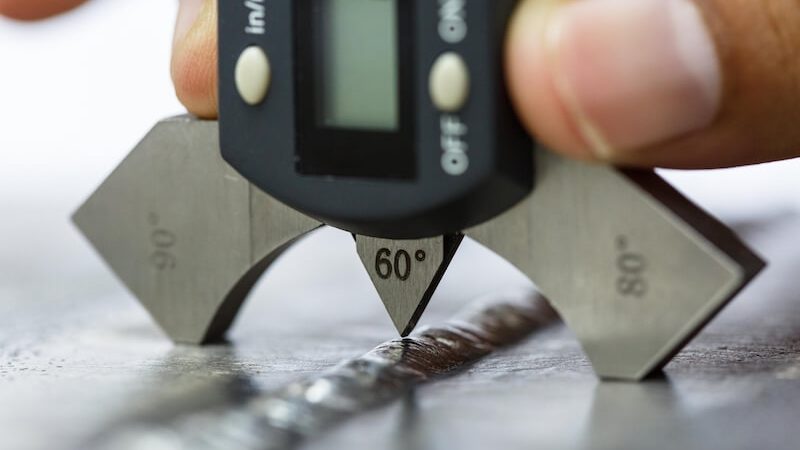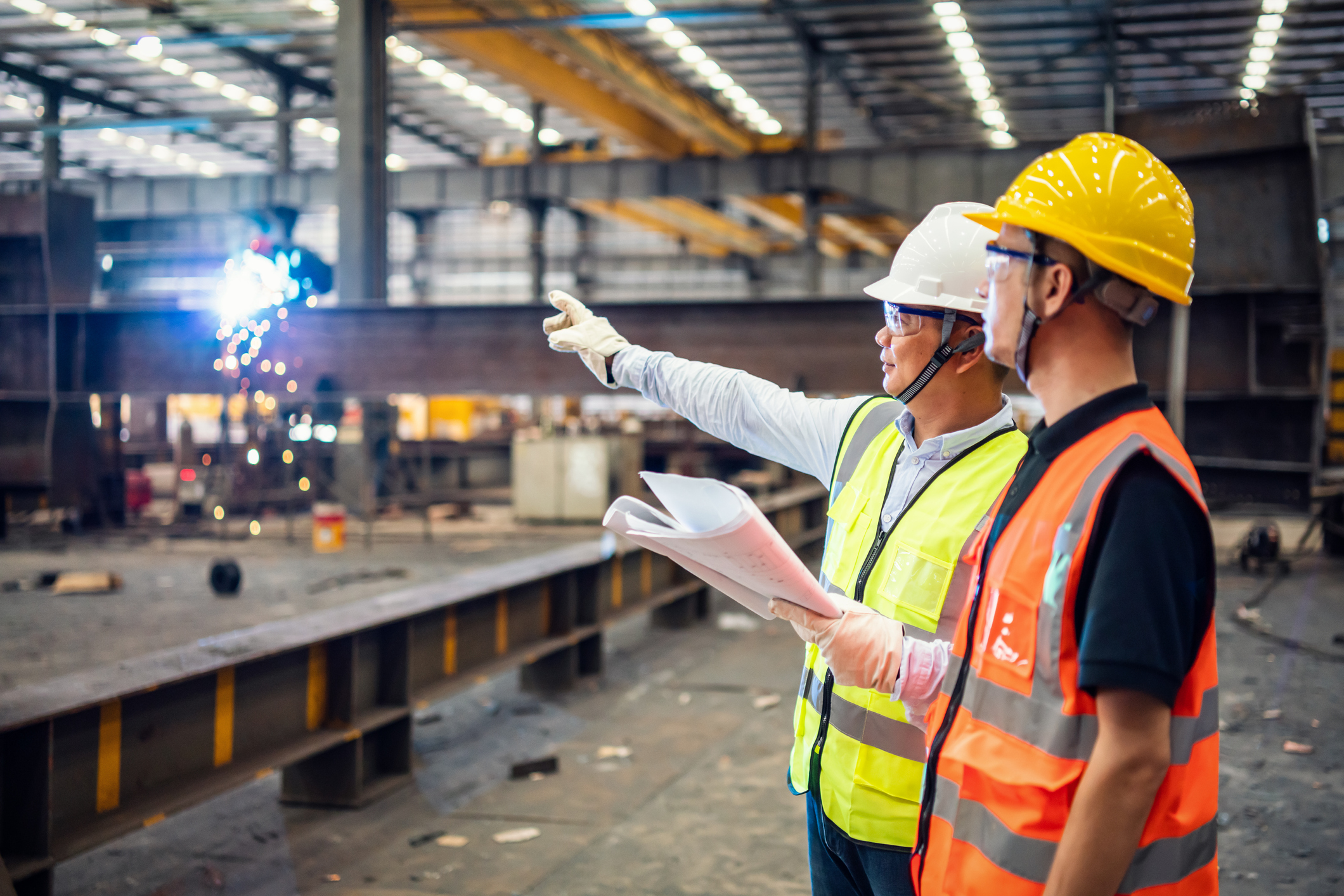Discovering Advanced Devices and Techniques for Accurate Welding Examination
In the world of welding assessment, the pursuit of accuracy and reliability is extremely important, stimulating the development of advanced tools and methodologies. Laser scanning developments and computerized assessment systems, furnished with fabricated intelligence, are redefining the landscape by lowering human error and improving security actions.
Ultrasonic Checking Developments
Ultrasonic testing developments regularly represent the forefront of improvements in welding assessment technologies. These developments have actually considerably boosted the capacity to find and review stoppages within bonded frameworks, making sure boosted honesty and safety and security - Welding Inspection Madison. Ultrasonic screening employs high-frequency acoustic waves to pass through materials, offering in-depth details concerning inner features without triggering damage. The most current growths in this field have focused on boosting precision, rate, and the capability to translate complicated data.

Additionally, developments in software application formulas for data evaluation have enhanced the accuracy of defect discovery and sizing. Automated ultrasonic screening systems now supply high-resolution imaging, making it possible for thorough evaluations of weld high quality. These systems are frequently incorporated with innovative visualization tools, which help with the interpretation of outcomes.
Radiographic Inspection Strategies
While ultrasonic screening advancements have actually established a high requirement in non-destructive exam, radiographic evaluation techniques continue to play an essential role in welding evaluation by providing distinct understandings into material honesty. Radiographic testing (RT) uses using X-rays or gamma rays to penetrate products, developing a radiograph that visually stands for the interior structure of a weld. This imaging capability is vital for discovering subsurface defects such as porosity, additions, and fractures that may not be noticeable through surface area assessments.
The procedure entails positioning a radiation source on one side of the weld and a detector on the opposite side. Variants in product density and thickness affect the attenuation of the rays, creating a contrasting image that exactly defines defects. RT is particularly advantageous for inspecting complex geometries and thick sections where various other methods may fail.
Despite its effectiveness, radiographic examination has to be performed with stringent adherence to safety protocols because of the harmful nature of ionizing radiation. In addition, the interpretation of radiographs requires knowledgeable personnel, as the top quality of the evaluation straight influences the integrity of the evaluation. Ongoing innovations in digital radiography are boosting picture quality and interpretation performance, strengthening RT's critical duty in making sure weld quality.
Laser Scanning Developments
Embracing laser scanning innovation in welding assessment has actually changed the assessment of weld quality and integrity. Unlike conventional assessment methods, laser scanning supplies quick information procurement, dramatically boosting the performance and precision of weld examinations.
Laser scanning breakthroughs have actually brought about substantial renovations in identifying and identifying surface area imperfections such as porosity, absence of combination, and undercuts. The high-resolution data enables inspectors to execute thorough evaluations, additional resources making sure that welds satisfy strict industry criteria. This approach sustains the advancement of digital documents, helping with lasting high quality assurance and traceability.
In addition, laser scanning modern technology integrates seamlessly with software program services designed for automated issue detection and analysis. The resultant data can be conveniently shared and examined, promoting collective decision-making processes. As markets remain to require see post greater requirements for weld quality, laser scanning continues to be at the forefront, using unequaled precision and efficiency in welding assessment.
Automated Inspection Equipments

Automated assessment systems use the advantage of uniformity, getting rid of human error and subjectivity from the inspection procedure. They are created to run in different atmospheres, from production floors to remote area websites, making sure thorough protection. Welding Inspection Madison. These systems can be programmed to follow details welding standards and criteria, providing thorough records and paperwork for quality assurance objectives
Furthermore, the assimilation of cloud-based platforms facilitates the storage and analysis of vast quantities of examination data. This enables pattern evaluation and predictive maintenance, enabling suppliers Learn More Here to deal with possible issues prior to they rise. The adoption of automatic examination systems is a critical action towards improving the reliability and effectiveness of welding procedures in commercial applications.

Enhancing Security and Performance
A substantial facet of boosting safety and effectiveness in welding assessment depends on the combination of cutting-edge innovations that enhance procedures and alleviate dangers. The adoption of advanced non-destructive screening (NDT) approaches, such as ultrasonic screening, phased variety ultrasonic screening (PAUT), and radiographic testing, plays a critical role in ensuring architectural honesty without jeopardizing the security of the personnel entailed. These methods permit extensive assessments with very little downtime, reducing possible dangers linked with standard techniques.
Furthermore, the execution of real-time information analytics and artificial intelligence algorithms has changed the method inspection information is interpreted. By using anticipating analytics, prospective defects can be recognized before they show up into crucial failings, guaranteeing prompt interventions and upkeep. This positive strategy dramatically improves functional efficiency and safety and security in welding processes.
Additionally, remote evaluation modern technologies, including drones and robotic spiders outfitted with high-resolution video cameras, make it possible for inspectors to evaluate hard-to-reach locations without revealing them to hazardous conditions. This not just improves evaluation precision yet also reduces human danger. By leveraging these innovative tools and methods, markets can accomplish higher security requirements and functional performance, inevitably leading to more trustworthy and lasting welding evaluation methods.
Final Thought
The assimilation of innovative devices and approaches in welding examination considerably improves problem detection and ensures structural honesty. Welding Inspection Madison. Technologies such as phased range ultrasonic screening, electronic radiography, and laser scanning enhance problem characterization, while automated evaluation systems and AI lower human error. Remote technologies facilitate secure analyses in harmful atmospheres, promoting a proactive maintenance strategy. These innovations not just increase inspection performance yet likewise add to enhanced safety and security and top quality assurance in industrial welding applications.

Ultrasonic testing technologies often stand for the forefront of innovations in welding assessment modern technologies.While ultrasonic testing technologies have set a high requirement in non-destructive examination, radiographic assessment strategies continue to play an indispensable role in welding examination by offering special understandings into product honesty.Embracing laser scanning innovation in welding examination has transformed the analysis of weld top quality and integrity. As industries continue to demand higher requirements for weld top quality, laser scanning continues to be at the forefront, providing unequaled accuracy and performance in welding inspection.
Automated evaluation systems provide the advantage of uniformity, getting rid of human error and subjectivity from the assessment procedure.